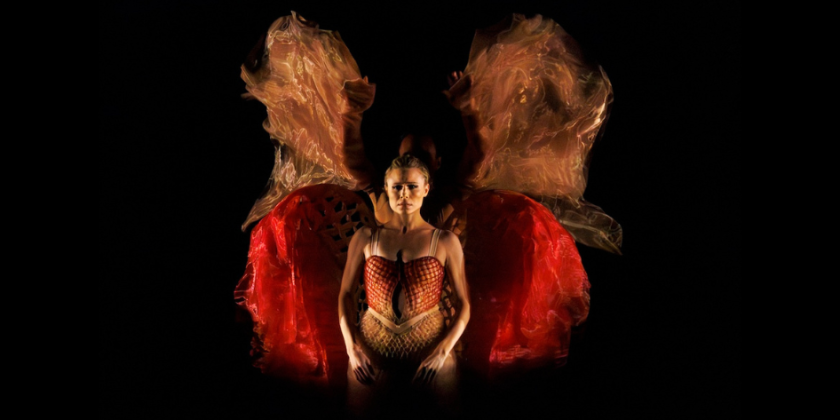
Published on October 15, 2025
Sara Mearns & Taylor Stanley; Photo: Erin Baiano
New York City Ballet at David H. Koch Theater
Choreographers: Alexei Ratmansky, Gianna Reisen, William Forsythe, Jamar Roberts
Composers: Peter Ablinger, Lukas Foss, Thom Willems, Arca
Lighting: Mark Stanley, Stirling Baker
Scenery & Costumes: Keso Dekker, Virgil Abloh of Off-White, Gianni Versace & William Forsythe, Iris van Herpen
Dancers: NYCB
Musicians: Stephen Gosling, Kurt Nikkanen, Elaine Chelton
Who comes to mind when you think of inimitable dance couples? Fred & Ginger? Rudi & Margot? In this era, surely, Tiler Peck & Roman Mejia are my favorites. The moment they face each other in William Forsythe’s Herman Schmerman Pas de Deux, they magically convey their connection, their complete trust and synergy. Presented as the third ballet in the contemporary program of New York City Ballet, Herman Schmerman… begins with Mejia partnering Peck as her supportive shadow until he briefly exits to re-appear, bare chested, wearing his infectious grin and a pleated yellow skirt, similar Peck’s. These two dance with such ease, fun, and charisma, it made me cry.
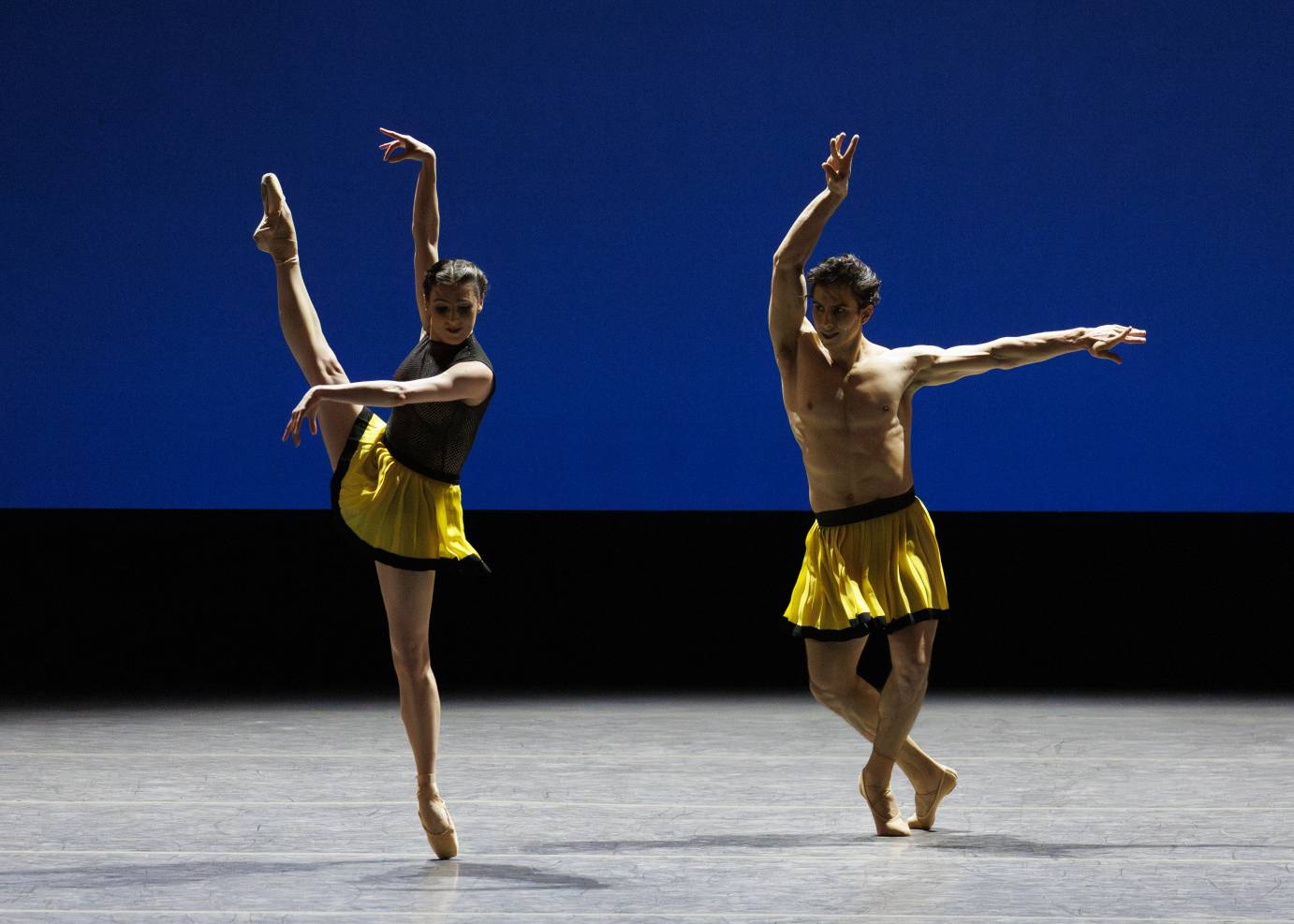
Tiler Peck and Roman Mejia in William Forsythe’s Herman Schmerman Pas de Deux; Photo: Erin Baiano
Forsythe choreographed Herman Schmerman as part of New York City Ballet’s 1992 Diamond Project; this duet was added in 1994. Forsythe said he was inspired by the 1982 film Dead Men Don’t Wear Plaid. This witty duet is performed to an electronic score from Thom Willems, a composer who has created 70 scores for Forsythe.
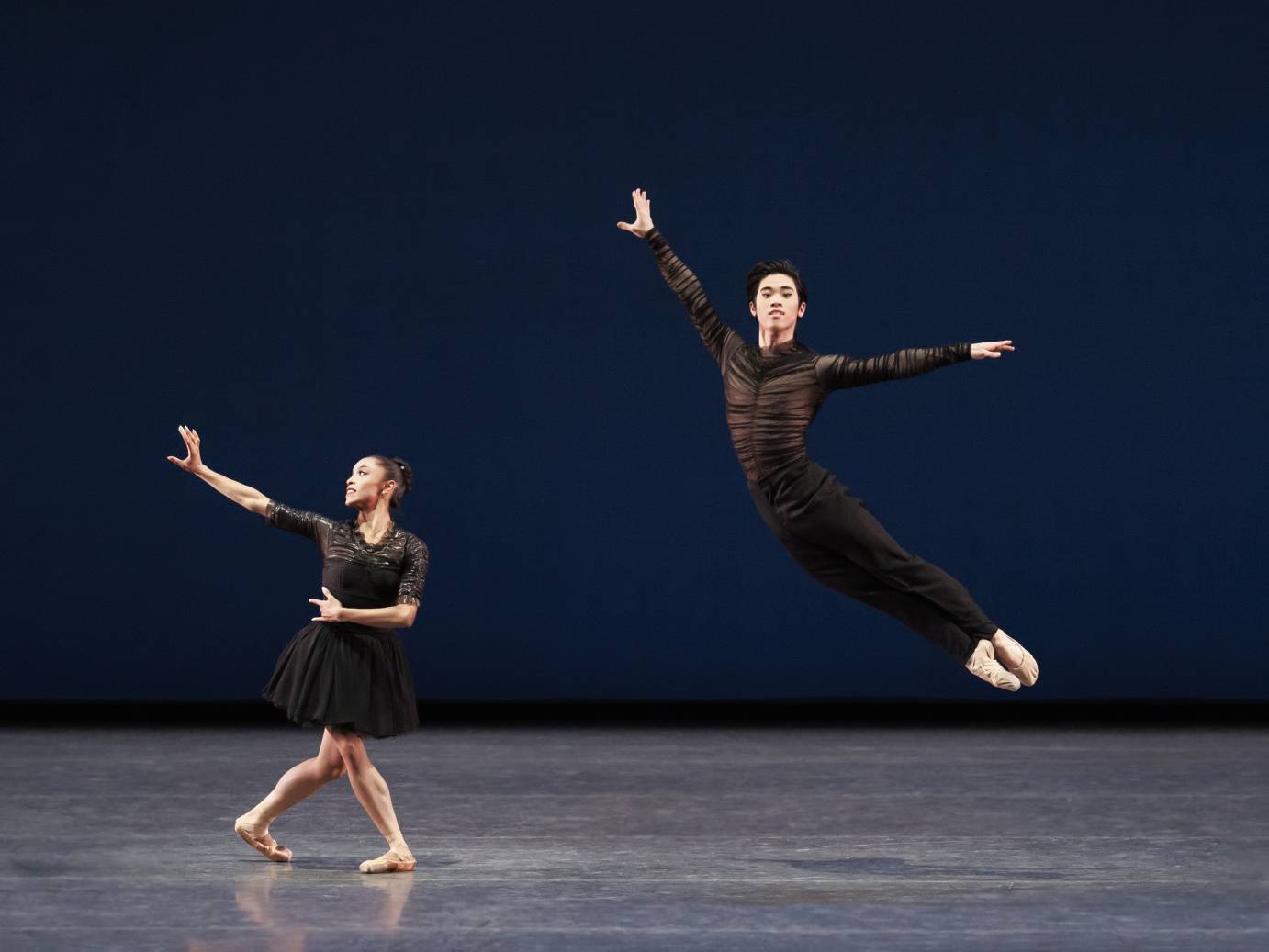
Mia Williams and KJ Takahashi in Gianna Reisen’s Composer’s Holiday; Photo credit: Erin Baiano
We see more flying short skirts, black, white and pink, in Composer’s Holiday another joyful piece by Gianna Reisen, choreographed when she was 19 in 2017 (having just graduated from the School of American Ballet). Set to Lukas Foss’ “Three American Pieces for Violin and Piano,” this ballet keeps the stage swirling with the lexicon of George Balanchine. Leaping with a bent knee bending parallel to the floor, knees touching, arms straight with the hands flexed, high battements– all the movements stemmed from Reisen’s training with few departures. Definitely fits into the repertoire nicely, Composer’s Holiday is a dancer’s dance.
Alexei Ratmansky’s choreography for Voices, presented first on the contemporary program, is as classical as the above mentioned, yet his score by the late Peter Ablinger is as intriguingly distracting as it is ignored. Pianist Stephen Gosling ,on stage right, played six selections from “Voices and Piano” a massive project which Ablinger began in 1998.
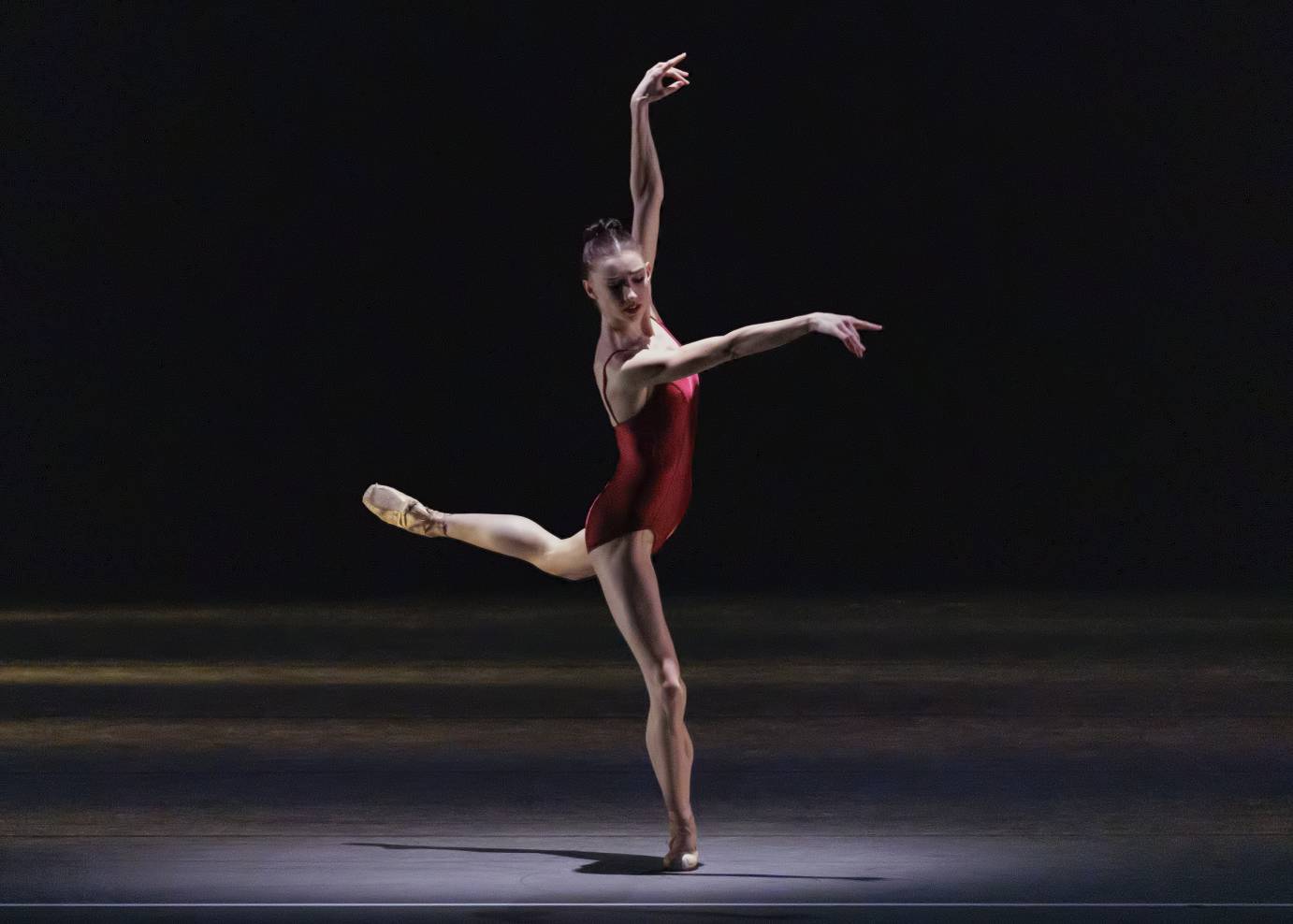
Alexa Maxwell in Alexei Ratmansky’s Voices; Photo: Erin Baiano
Above the heads of the dancers, we see a single white line that displays the voltage shifts of the score as produced by an oscilloscope. The voices of six women: Bonnie Barnett, Grenadine Slain, Forough Farrokhzad, Nina Simone, Setsuko Hara, and Agnes Martin are muffled, yet we can detect a range of languages and topics. The piano does not accompany the voices, so much as compete with them.
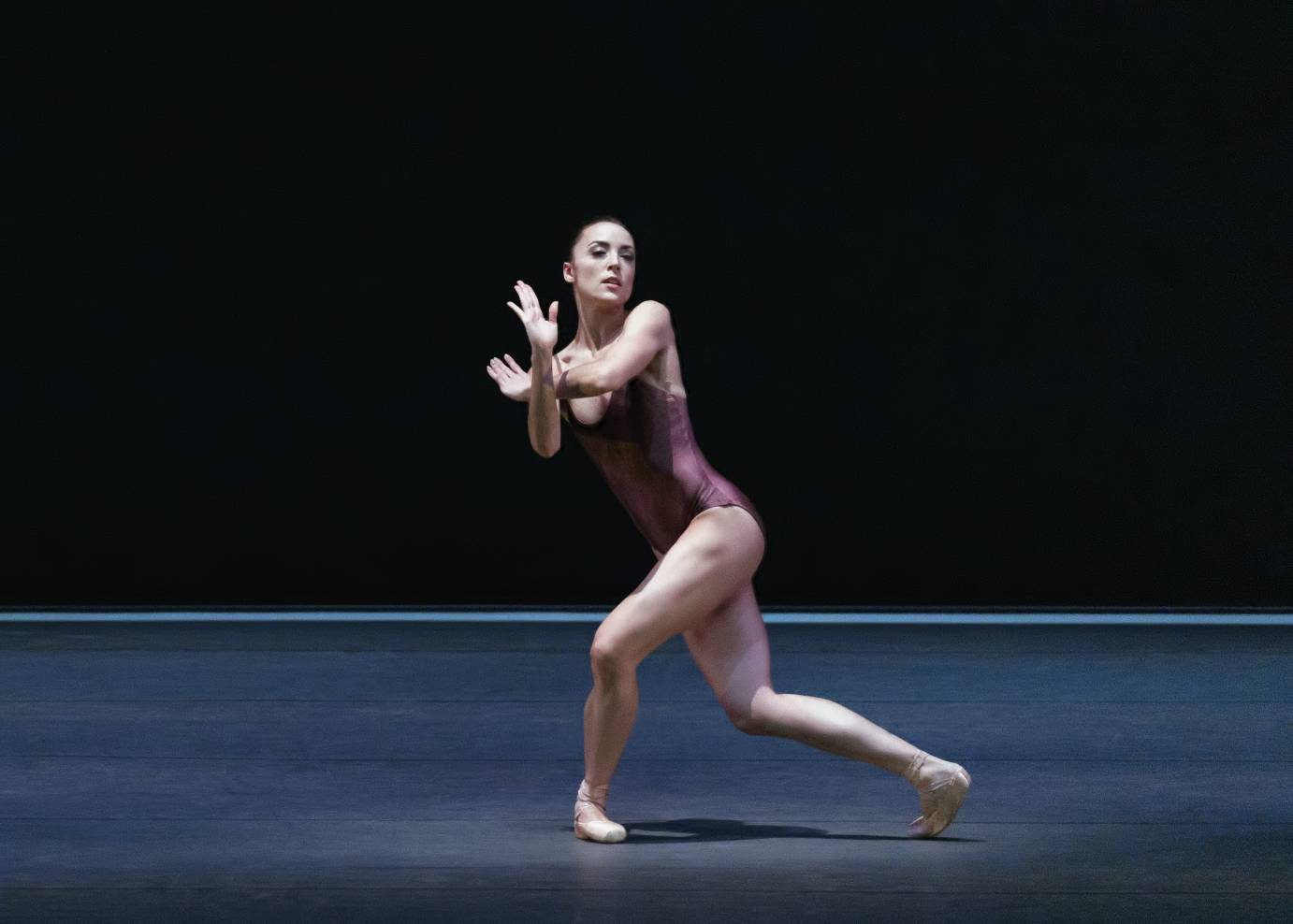
Emily Kikta in Alexei Ratmansky’s Voices; Photo: Erin Baiano
The oddly subversive score does not bring out the rebel in Ratmansky, known for his story ballets and dramatic flourish. He created a succession of pure female solos, which are quite similar. Four male dancers march heavy footed into center stage to deposit or collect the previous soloist, casting free one man to perform a brief, virtuosic divertissement. Though it premiered January 30, 2020 at New York State Theatre, Voices could have been made in the 70s in the midst of the electronic experiments by composers John Cage, and others.
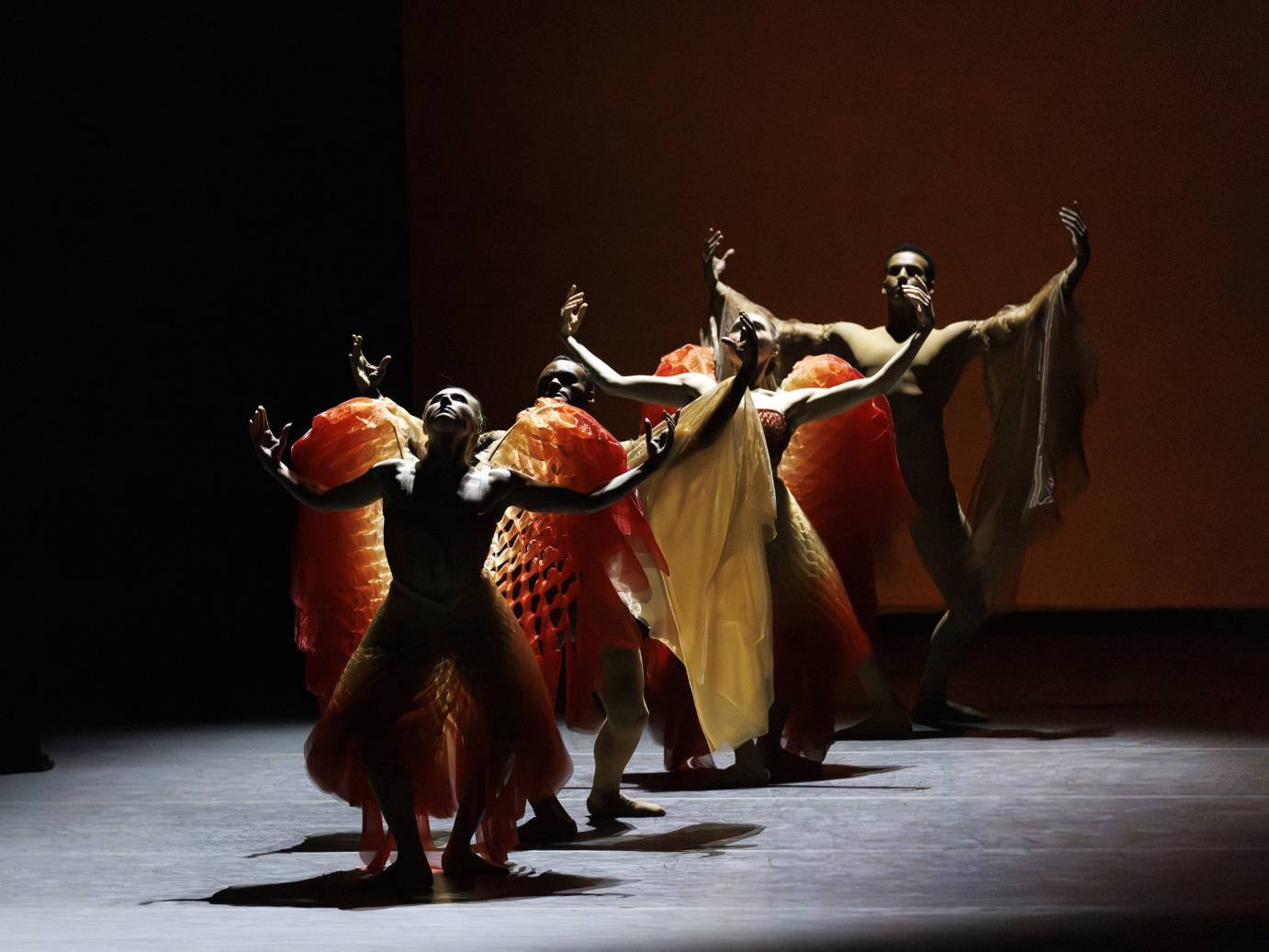
Sara Mearns, Taylor Stanley, Isabella LaFreniere, and Ryan Tomash in Jamar Roberts’ Foreseeable Future; Photo: Erin Baiano
Jamar Roberts premiered his latest barefoot work for NYCB Foreseeable Future on October 8, 2025. His collaborators, Dutch fashion designer Iris van Herpen whose amazing innovation stems from her love of nature, and lighting designer Brandon Stirling Baker, embellish his work with indelible imagery.
In the opening quartet, two women don red, fluttery angel wings while the men float iridescent panels. This image is so ethereal that the second section with an ensemble dancing in white and silver thuds us back to earth with a Star Trek sensibility. The score by a Venezuelan electronic composer Arca is aggressive, fighting any urge to merge with the beauty of the fabric, dance, lights. Unlike the other works on the program, where precision and placement are of utmost importance, Foreseeable Future feels more fluid, more internal, and elusive. His third work for New York City Ballet; Roberts and his collaborators can be heard here in this clip made by NYCB.
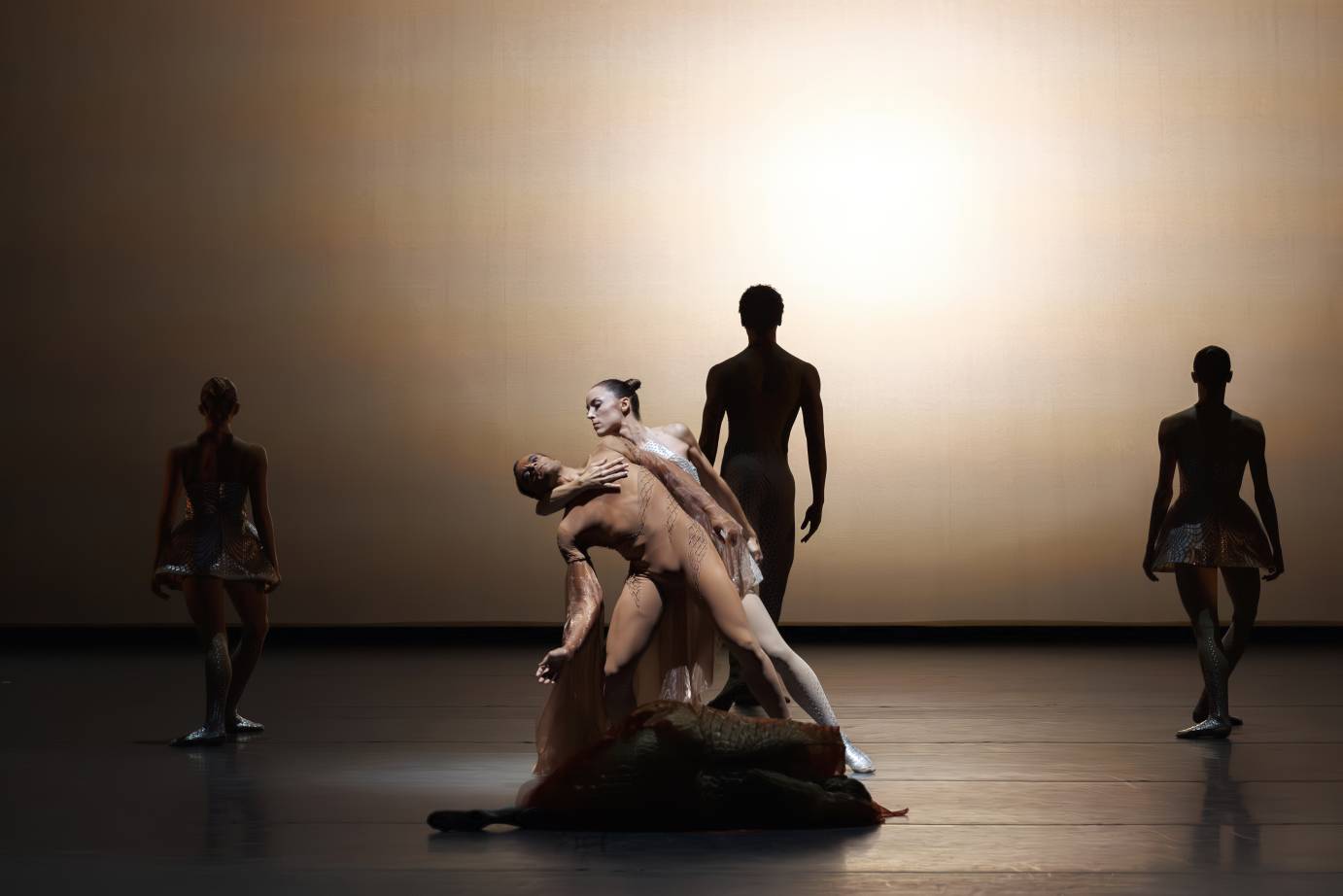
Emily Kikta, Taylor Stanley, and the Company in Jamar Roberts’ Foreseeable Future; Photo: Erin Baiano
The Dance Enthusiast Shares IMPRESSIONS/our brand of review, and creates conversation.
For more IMPRESSIONS, click here.
Share your #AudienceReview of performances. Write one today!
The Dance Enthusiast – News, Reviews, Interviews and an Open Invitation for YOU to join the Dance Conversation.
